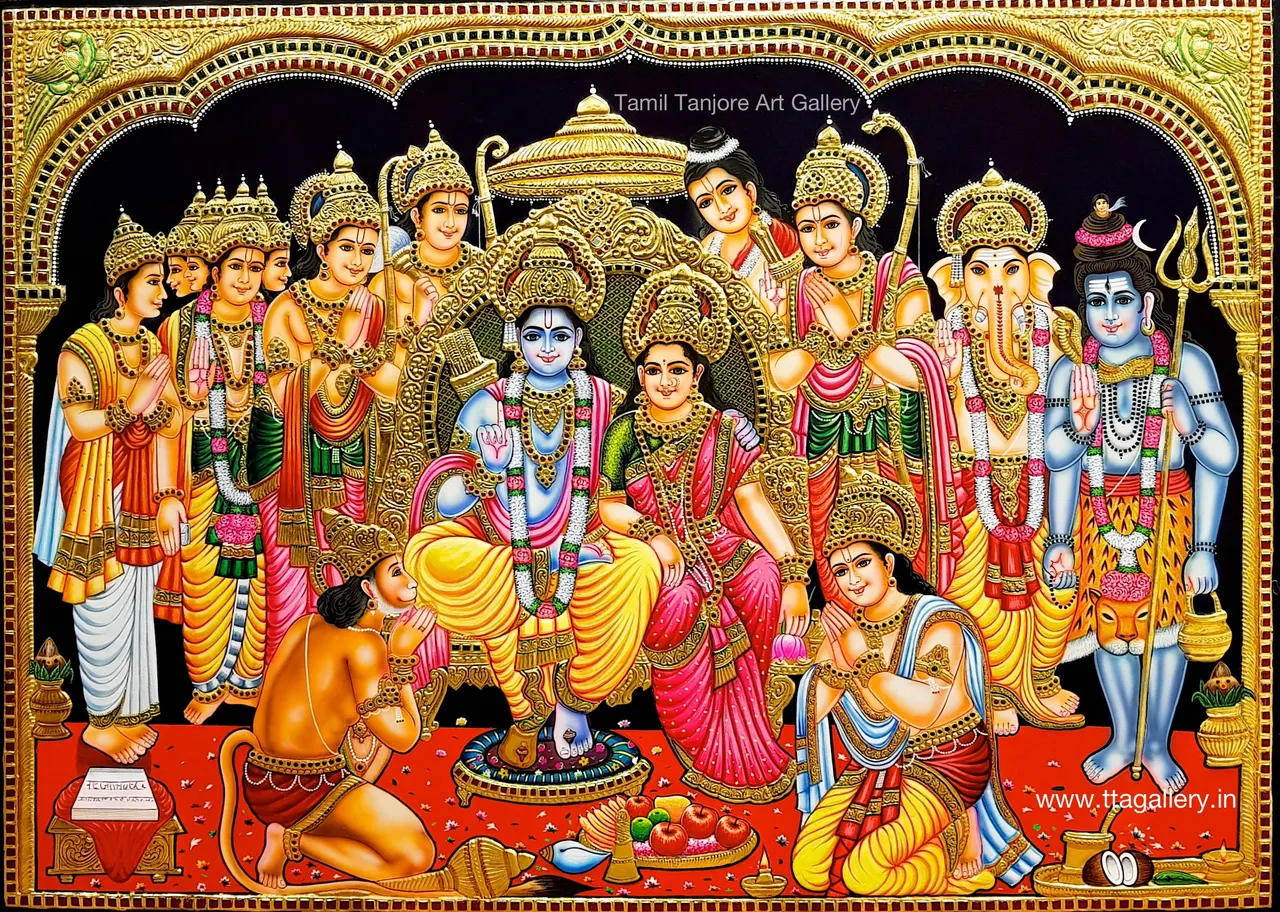Yesterday was the ninth day of the waxing moon cycle of this lunar month and the annual festival day in India called Ramnaumi. It’s the birthday of King Rama, the incarnation of Vishnu that appeared in a previous age, many hundreds of thousands of years ago but still celebrated today.

Rama is an expansion or avatar of Vishnu the supreme deity in the Vedic pantheon, who is worshipped as god by millions of Hindus or followers of Vedic culture (sanatana dharma). You may have heard of Vishnu and his consort Lakshmi, or Krishna and his consort Radha. Well in the Ramachandra incarnation, he appeared with his consort called Sita, as well as his brother Lakshman and the famous monkey Hanuman.
This ancient pastime is one of the great historic epic tales of India, found in the book called Ramayana by the sage Valmiki. This Sanskrit text tells the history of Rama as the greatest king who ever lived, back in a time when dharma was upheld as the highest standard and civilization was in harmony.
Still today in India the legacy of King Rama is held up as the epitome of top class rulership by a king and is called “rama rajya”, a standard admired by politicians today but of course long gone in the mists of time. Today leaders and society are a far cry from the standards of those days many thousands of years ago.
The timeline in the Vedic texts of ancient India is way longer than our modern western historians present as their speculation on the planet’s history. Our human race has gone through several ice ages in a 12 000 year cycle, where civilization is lost and rebuilt each time, so our current attempt at technological evolution is not the first. And there were advanced levels of existence among the humans of many thousands of years ago, several ice ages back, so to speak.
Every year on the ninth day of this particular lunar cycle, India will celebrate the advent of King Rama, and I also got together with my friends from our meditation group and we had a little celebratory dinner with some inspired bhajans (music and singing) and remembrance of the pastimes of King Rama. India has numerous of these festival days throughout the year, much like holy days such as Christmas, but many more of them all year long.
It’s possible to read the epic narration of King Rama in the Ramayana, where it tells the story of the demon Ravana who kidnapped Rama’s wife Sita, and how Rama took his army which included the monkey Hanuman and his monkey troops, to the island of Sri Lanka, where they fought and killed the demon Ravana and reclaimed Sita. First they had to build a bridge to the island by piling up stones as a walkway across the channel there, which is about 30 miles wide roughly.
Curiously pilots have recently been able to spot just such an underwater link of what looks like a stone walkway connecting mainland India to the island of Sri Lanka to the south. It’s visible from the air and appears to be a real feature, perhaps from a time when the ocean level was lower than today and thus the walkway was above the surface. This is called “Adam’s Bridge” or “Ram Setu” and is a limestone shoal bridge that was apparently still walkable up to the 15th century.
Rama is considered one of the ten primary incarnations of the supreme god Vishnu. He is thus worshipped as the original personality of godhead, just like the other of the ten incarnations or avatars, like Krishna, who appeared more recently, only 5000 years ago. Rama by comparison appeared hundreds of thousands of years ago. Such is the intricacy and greater depth of the Sanskrit Vedic scriptures, which make our western Semitic scriptures look quite small by comparison, in my opinion after having studied them.
Some people may understandably see these ancient tales as mythology and no one can say for sure of course to what degree they narrate actual historical events, but the tales certainly tell of a time much like today, where demonic villainous leaders try to usurp the rulership of the world while more pious and noble leaders fight and defeat them. Throughout history we seem to have the battle of good versus evil going on between tribes or nations, in the attempt to claim the treasures or resources available on the planet. Still today this is going on, only the names and places have changed.
Nevertheless, to remember a time of actual purity, nobility of character, upholding dharma, duty, honor and all that is good for humanity, is inspiring and sets a standard against which we can compare our leaders of today. Of course, we are in a much more degraded age now – the latter stages of the Great Cycles of creation and annihilation on the planet - so civilization is at a degraded stage already, compared to the time of King Rama.
Therefore the most we can do is remember the good old days, so to speak, while not being too surprised by how far we have fallen as a human race at our level of consciousness today. In the greater historical perspective of life, we can’t expect civilization to improve any more. We are too far gone. We can only look within and focus on our own individual evolution of consciousness along with those around us, in our circle of influence.
A possible temporary shift to a brief period of enlightenment is always possible and rumored to be imminent, but the long term trajectory for humanity on the planet is downward into destruction over the coming thousands of years. This all plays out in longer time spans stretching thousands of years still, of which our lifetime is just the blink of an eye in the day of Brahma, the creator.
